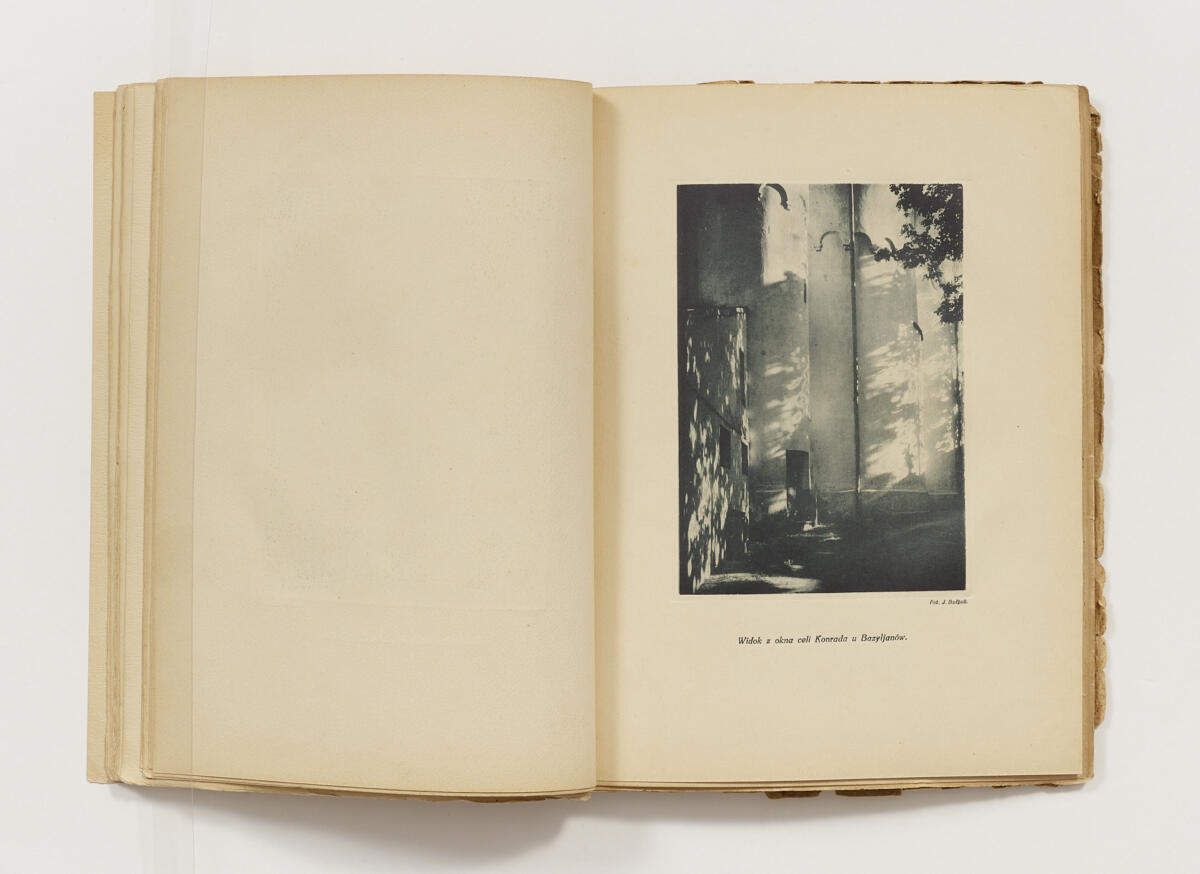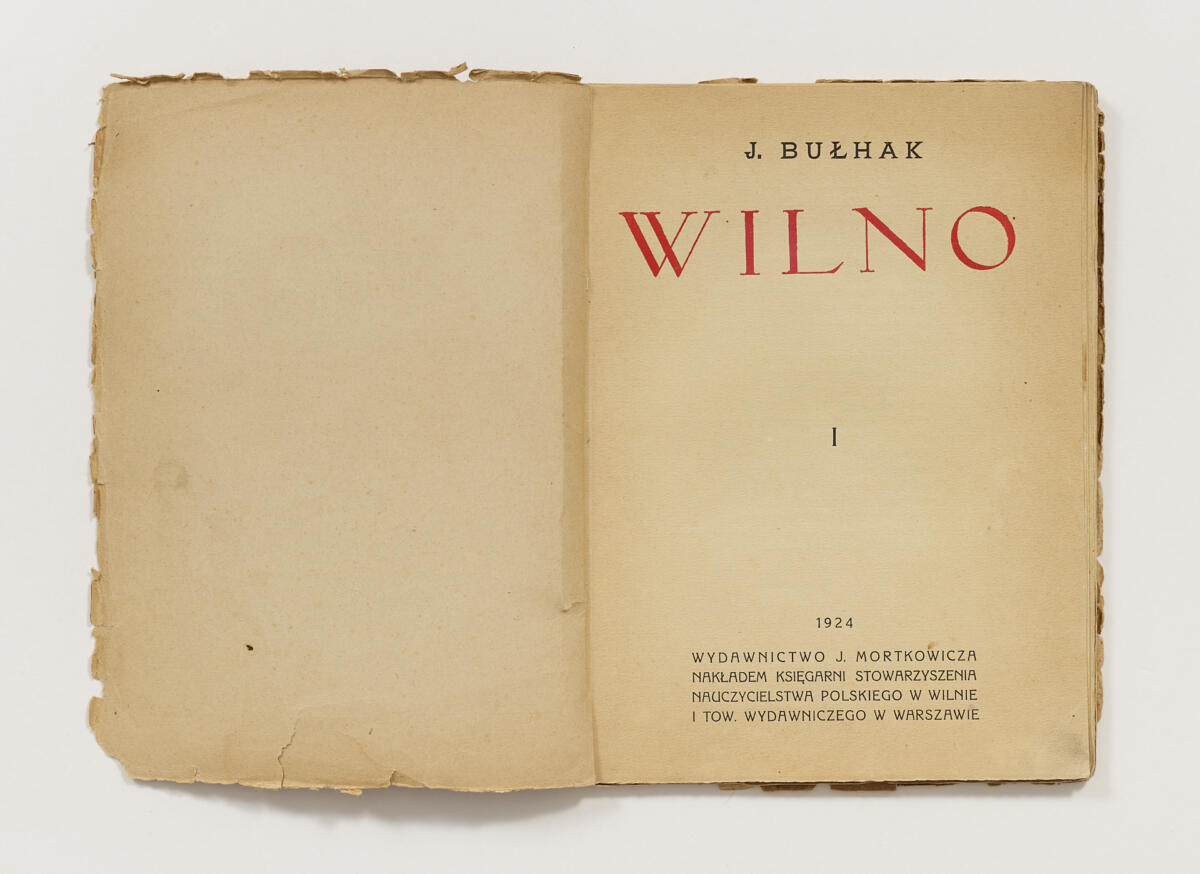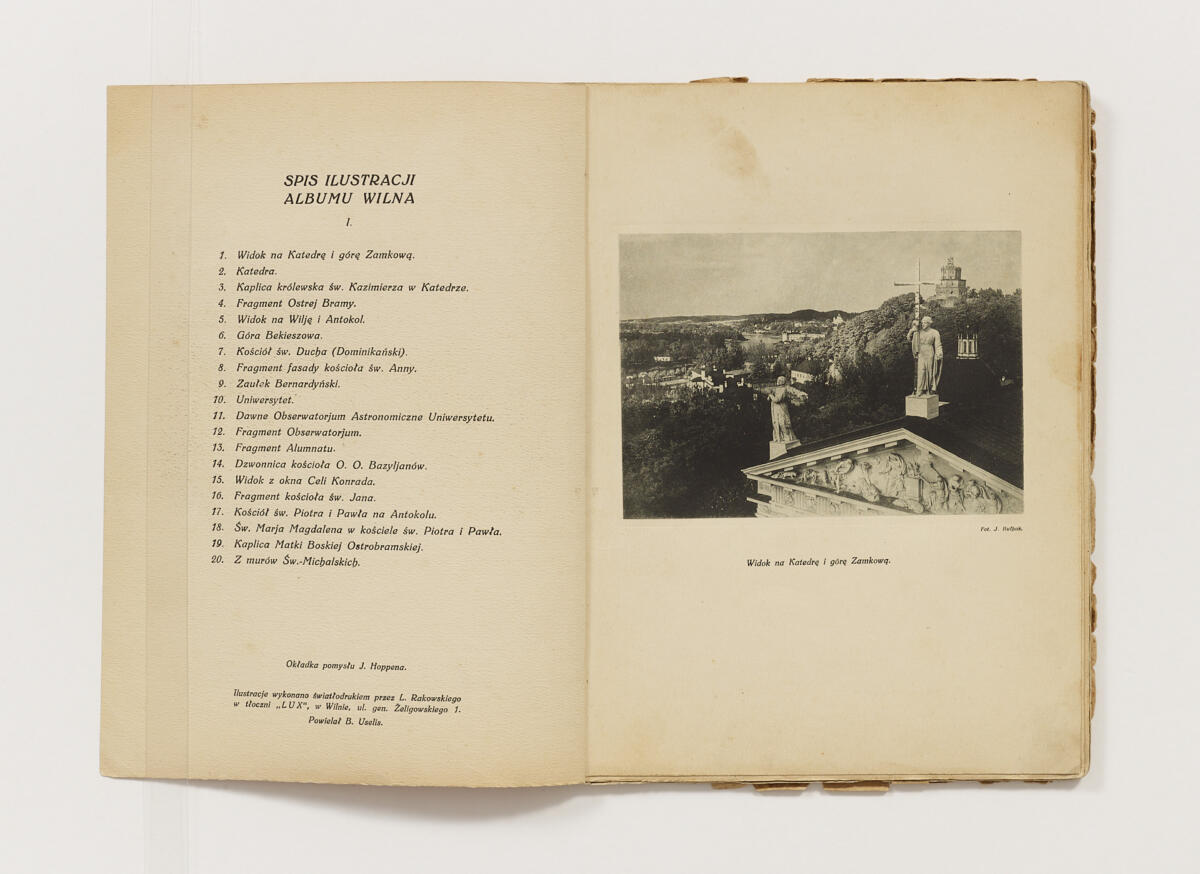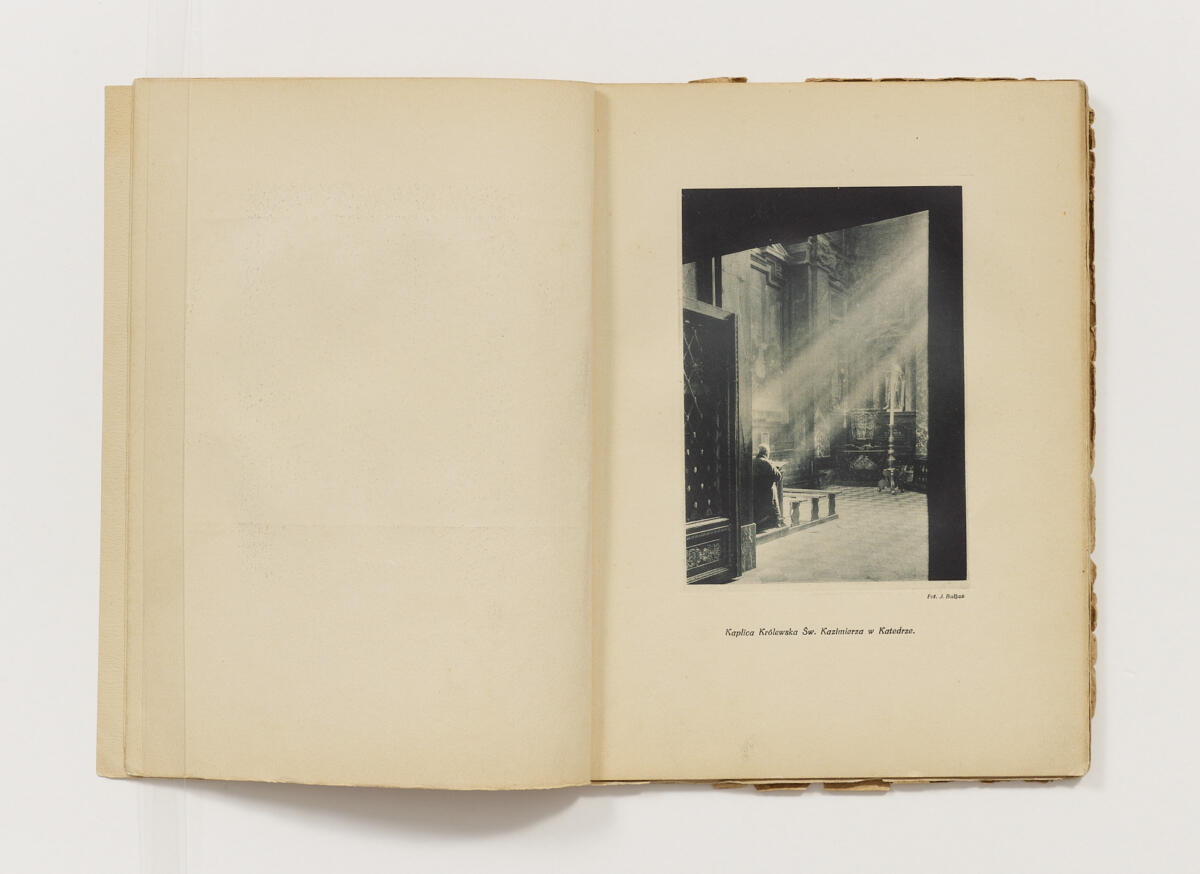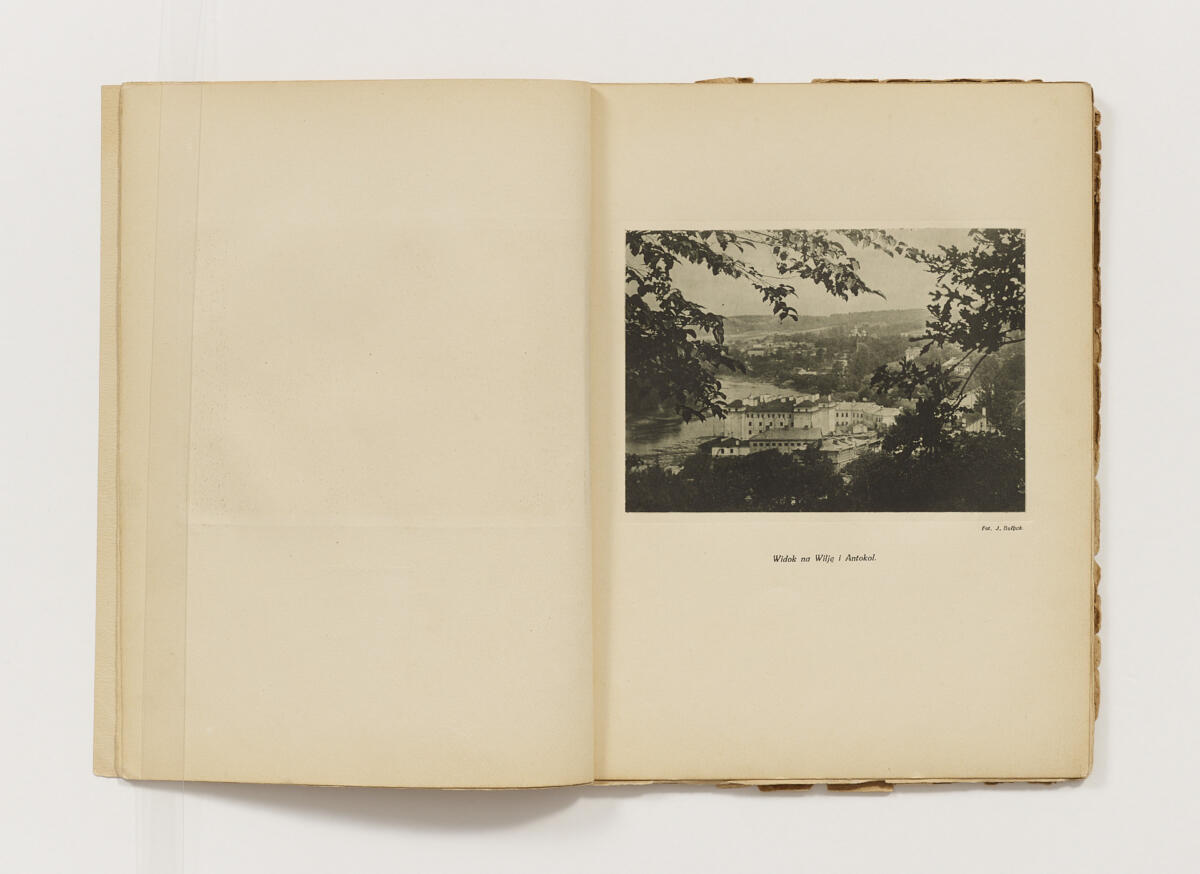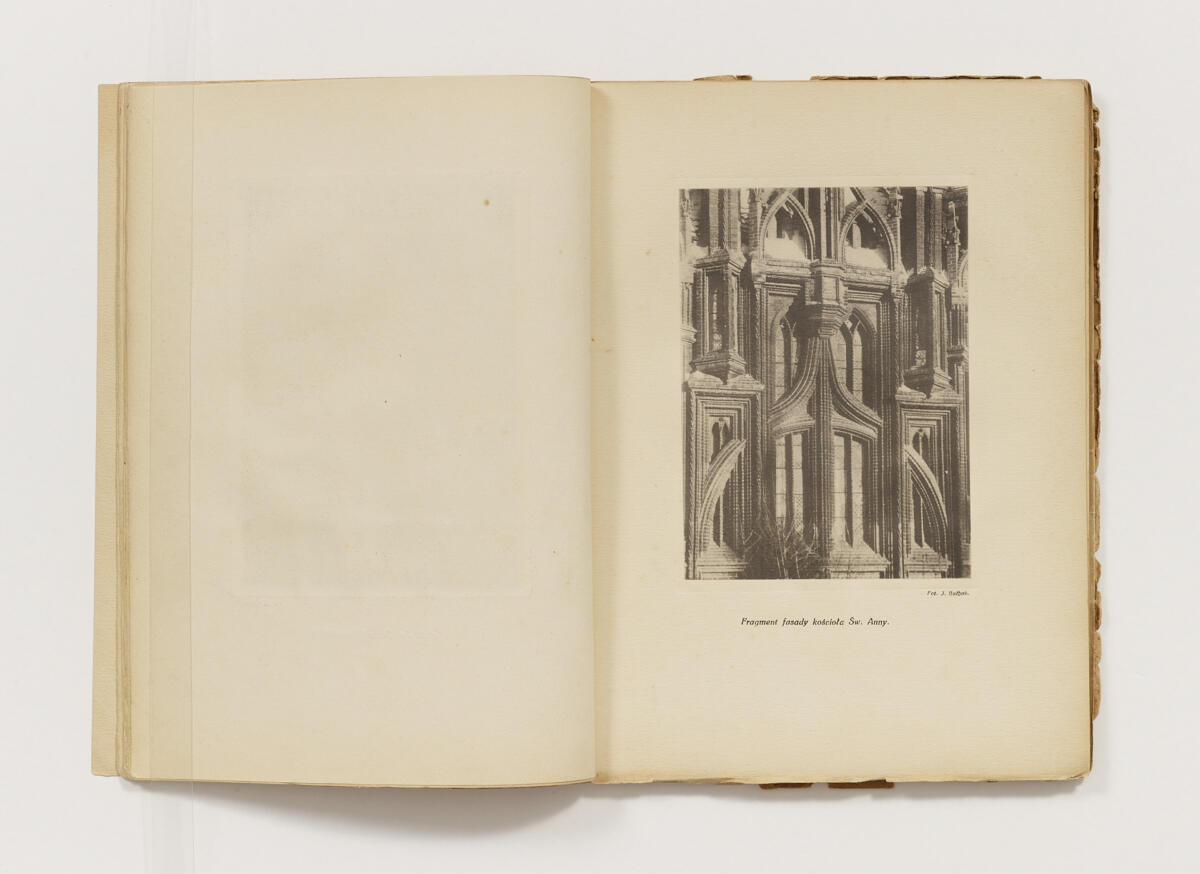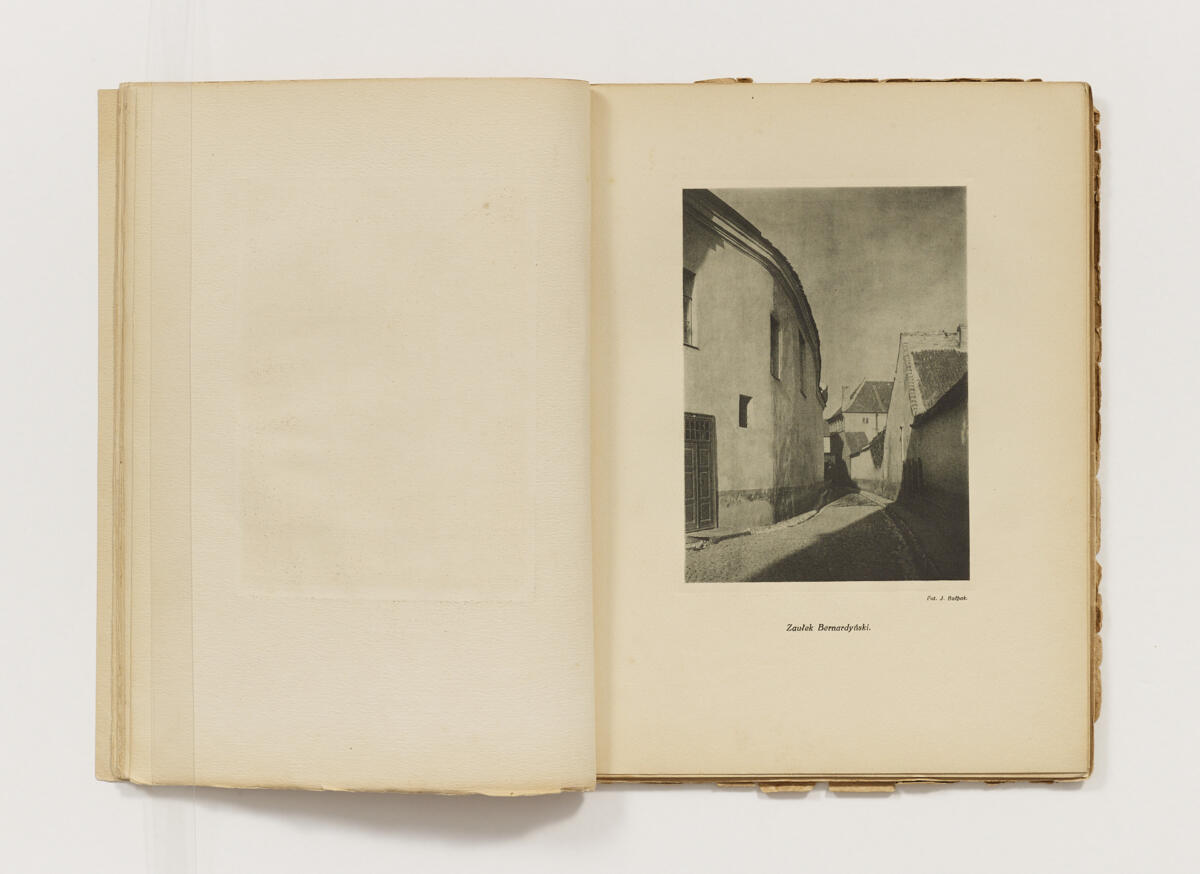A book from the Fotoklub library collection of Central European photobooks [#fotoklub]
summary / informacje o książce:
| The first publication of photos by Bułhak, the album is laid out rather like a portfolio. It contains a selection of fine art photos showing views of Vilnius and fragments of architecture, including some of his most frequently duplicated shots, such as the interior of the Royal Chapel in Vilnius cathedral, to name but one. |
|
Pierwsze albumowe, układem przypominające tekę, wydanie fotografii Jana Bułhaka. Wybór artystycznych ujęć widoków Wilna i fragmentów architektury, w tym najczęściej powielane fotografie m.in. wnętrza kaplicy królewskiej w katedrze. |
comments / uwagi:
about the photographer / o fotografie:
| Jan Bułhak was born in the village of Ostaszyn/Astašyn in 1876 and he died in the town of Giżycko in north-east Poland in 1950. A pioneer of Polish fine arts photography, he was also a theorist and critic of the form. Bułhak was a driving force in the clubs and union movement; he co-founded Fotoklub Wileński (the Vilnius Photoclub) in 1927, Photoclub Polski (the Polish Photoclub) in 1929 and the Związek Polskich Artystów Fotografików (Union of Polish Art Photographers) in 1947. He was connected with Vilnius and its environs for most of his life and that was where his most important photographic series were taken. He remained true to the tradition of pictorialism. In the late nineteen thirties, he formulated a programme of Polish photography which he also developed during the changing political realities of the Second World War. He specialised primarily in travel photography, landscapes and historical architecture. |
|
Jan Bułhak (ur. 1876, Ostaszyn – zm. 1950, Giżycko) – pionier polskiej fotografii artystycznej, jej teoretyk i krytyk, animator ruchu klubowego i związkowego, współzałożyciel Fotoklubu Wileńskiego (1927), Fotoklubu Polskiego (1929) i ZPAF (1947). Przez większość życia związany z Wileńszczyzną gdzie powstały jego najważniejsze cykle fotograficzne. W swojej twórczości fotograficznej wierny tradycji piktorializmu. Pod koniec lat 1930. sformułował program fotografii ojczystej, który rozwijał również w zmienionych realiach politycznych po II wojnie światowej. Specjalizował się przede wszystkim w fotografii krajoznawczej, pejzażach i fotografii architektury historycznej. |
bibliography / bibliografia:
author / autor:
title / tytuł:
| Wilno w fotografiach Jana Bułhaka |
|
|
year of publication / data wydania:
photographs / fotografie:
text / tekst:
language / język:
design / opracowanie graficzne:
| cover design: Jerzy Hoppen |
|
projekt okładki: Jerzy Hoppen |
publisher / wydawca:
| Wydawnictwo J. Mortkowicza, nakładem Księgarni Stowarzyszenia Nauczycielstwa Polskiegi w Wilnie i Towarzystwa Wydawniczego w Warszawie |
|
|
place of publication / miejsce wydania:
pages / liczba stron:
format / wymiary:
binding / oprawa:
| softcover |
|
miękka, wiązana |
printing technique / technika druku:
| druk typograficzny i światłodruk |
|
|
print run / nakład:
ISBN:

